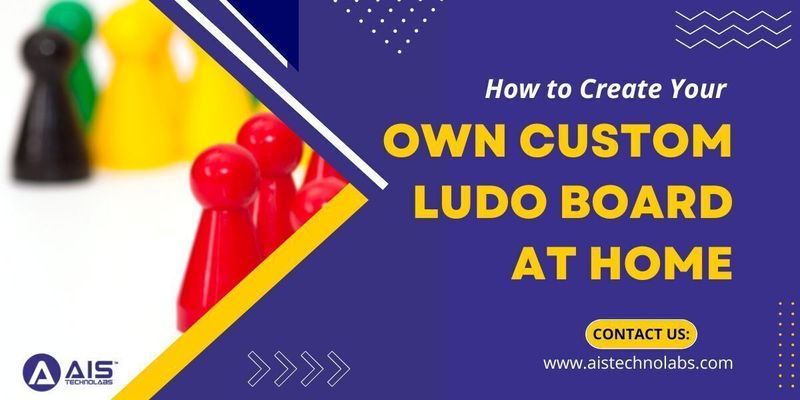Ludo has been a beloved board game for generations, offering hours of fun and excitement for players of all ages. While store-bought boards are readily available, making your own custom Ludo board at home can be a rewarding and creative experience. Not only does it allow you to personalize the design, but it also makes for a fantastic DIY project that you can enjoy with friends and family. In this guide, we will walk you through the step-by-step process of creating a custom Ludo board while ensuring durability and a professional finish.
Materials Needed
Before you start, gather the following materials to ensure a smooth creation process:
- Base Material: Cardboard, plywood, or foam board
- Ruler and Pencil: For precise measurements
- Markers, Paints, or Colored Paper: To design the board
- Scissors and Glue: For assembling parts
- Dice and Game Tokens: Either purchased or homemade
- Laminating Sheets (Optional): For added durability
With these materials in hand, let’s dive into the creation process.
Step-by-Step Guide to Making a Custom Ludo Board
Step 1: Choosing the Base Material
First and foremost, you need to select the right base for your board. If you prefer a lightweight and temporary board, cardboard or foam board will work well. However, for a more durable and long-lasting board, consider using plywood.
Pro Tip: If you choose plywood, sand the surface lightly to ensure smooth painting and designing.
Step 2: Drawing the Board Layout
Once you have your base, it's time to draw the Ludo grid. A standard Ludo board consists of a 15x15 square grid with four quadrants, each representing a player's home base.
- Use a ruler and pencil to outline the squares evenly.
- Draw the home paths leading to the center.
- Mark the safe zones using distinct shapes or colors.
Pro Tip: If you have access to Ludo game source code, you can print a digital version of the board and use it as a template.
Step 3: Coloring and Designing
Now comes the fun part—customizing your board!
- Use paints, markers, or printed designs to color the four quadrants.
- Add unique symbols, patterns, or family initials for a personal touch.
- Ensure that the board remains symmetrical and visually appealing.
Pro Tip: If you want a professional look, consider using a stencil or digital print for accuracy.
Step 4: Making the Game Pieces
While you can purchase Ludo game tokens, making your own adds a special touch. Here are some ideas:
- Use clay or polymer to craft miniature figurines.
- Repurpose buttons or beads.
- Cut small wooden or cardboard circles and paint them.
Make sure each set of tokens has a distinct color to avoid confusion during gameplay.
Step 5: Creating the Dice (Optional)
Although you can use a standard dice, creating a custom dice adds an extra element of personalization.
- Find a small wooden cube or create one from hardened clay.
- Paint it in a color that matches your board.
- Use a fine-tip marker or engrave numbers on each side.
Step 6: Assembling and Laminating the Board
To ensure longevity, consider laminating your board. If lamination isn’t an option, apply a thin layer of transparent glue or mod podge for a protective finish.
Testing and Playing Your Custom Ludo Board
Once everything is complete, it’s time to put your board to the test!
- Set up the game pieces on their respective starting positions.
- Roll the dice and begin playing.
- Ensure all markings are clear and the game flows smoothly.
If you notice any design flaws, you can always make adjustments to enhance gameplay.
Additional Customization Ideas
If you want to take your custom Ludo board to the next level, consider these additional enhancements:
- Make It Foldable: Attach hinges or use a double-layered design for easy storage.
- Glow-in-the-Dark Effect: Use glow paints for a unique nighttime experience.
- Magnetic Board: Stick magnets under the board and attach magnetic pieces for a travel-friendly game.
- Personalized Rule Set: Modify some rules to create a custom version of Ludo.
Conclusion
Creating your own custom Ludo board at home is not only a fun project but also an opportunity to showcase your creativity. Whether you make it for yourself, your family, or as a gift, the result is a one-of-a-kind game that holds sentimental value. If you're a developer interested in Ludo game source code, you can even integrate your custom design into a digital version for online gameplay. For professional game development services, feel free to reach out to AIS Technolabs. If you need assistance with Ludo game design or software, contact us today!
FAQ
1. What materials are best for making a Ludo board?
Cardboard, plywood, and foam board are great choices, depending on your durability preference.
2. Can I use a printed design instead of hand-drawing the board?
Yes! You can print a Ludo board layout and glue it onto a sturdy base.
3. How can I make my board more durable?
Laminating the board or applying a layer of mod podge can help protect it from wear and tear.
4. Can I add new rules to my custom Ludo game?
Absolutely! You can introduce special power-ups, additional safe zones, or alternative movement rules.
5. Where can I get Ludo game source code for a digital version?
If you're interested in digital Ludo development, AIS Technolabs offers customizable Ludo game source code solutions.
View Source: https://medium.com/@poker-game-development/how-to-create-your-own-custom-ludo-board-at-home-2cb11161a672




Top comments (0)